Related Research Articles
Aesthetics is the branch of philosophy concerned with the nature of beauty and the nature of taste; and functions as the philosophy of art. Aesthetics examines the philosophy of aesthetic value, which is determined by critical judgements of artistic taste; thus, the function of aesthetics is the "critical reflection on art, culture and nature".

Suspension of disbelief is the avoidance—often described as willing—of critical thinking and logic in understanding something that is unreal or impossible in reality, such as something in a work of speculative fiction, in order to believe it for the sake of enjoying its narrative. Historically, the concept originates in the Greco-Roman principles of theatre, wherein the audience ignores the unreality of fiction to experience catharsis from the actions and experiences of characters. The phrase was coined and elaborated upon by the English poet and philosopher Samuel Taylor Coleridge in his 1817 work Biographia Literaria: "that willing suspension of disbelief for the moment, which constitutes poetic faith".
Mimesis is a term used in literary criticism and philosophy that carries a wide range of meanings, including imitatio, imitation, nonsensuous similarity, receptivity, representation, mimicry, the act of expression, the act of resembling, and the presentation of the self.

Aesthetics of music is a branch of philosophy that deals with the nature of art, beauty and taste in music, and with the creation or appreciation of beauty in music. In the pre-modern tradition, the aesthetics of music or musical aesthetics explored the mathematical and cosmological dimensions of rhythmic and harmonic organization. In the eighteenth century, focus shifted to the experience of hearing music, and thus to questions about its beauty and human enjoyment of music. The origin of this philosophic shift is sometimes attributed to Baumgarten in the 18th century, followed by Kant.
Fictionalism is the view in philosophy which posits that statements appearing to be descriptions of the world should not be construed as such, but should instead be understood as cases of "make believe." Thus, allowing individuals to treat something as literally true.
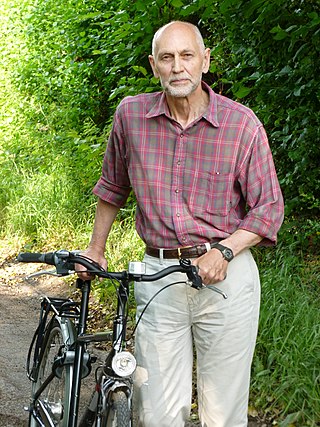
Gregory Paul Currie FAHA is a British philosopher and academic, known for his work on philosophical aesthetics and the philosophy of mind. Currie is Professor of Philosophy at the University of York and Executive Editor of Mind & Language.
Depiction is reference conveyed through pictures. A picture refers to its object through a non-linguistic two-dimensional scheme, and is distinct from writing or notation. A depictive two-dimensional scheme is called a picture plane and may be constructed according to descriptive geometry, where they are usually divided between projections and perspectives.
This is an alphabetical index of articles about aesthetics.
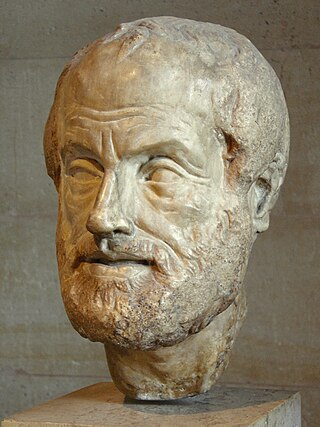
Representation is the use of signs that stand in for and take the place of something else. It is through representation that people organize the world and reality through the act of naming its elements. Signs are arranged in order to form semantic constructions and express relations.
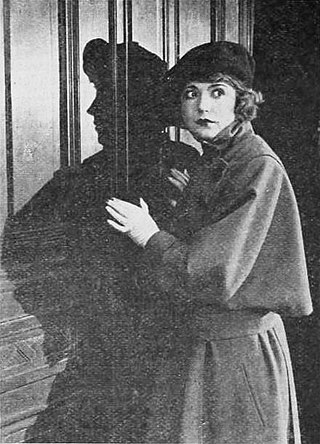
Suspense is a state of anxiety or excitement caused by mysteriousness, uncertainty, doubt, or undecidedness. In a narrative work, suspense is the audience's excited anticipation about the plot or conflict, particularly as it affects a character for whom the audience feels sympathy. However, suspense is not exclusive to narratives.
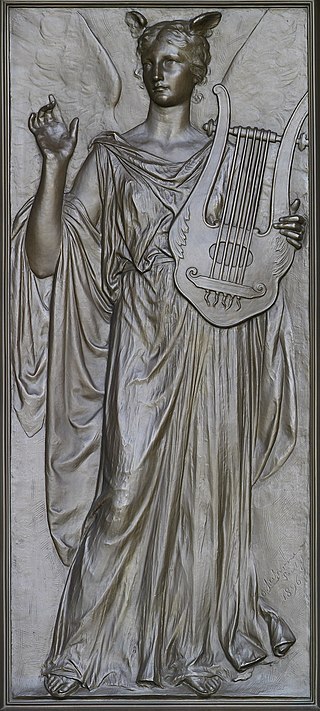
Imagination is the production of sensations, feelings and thoughts informing oneself. These experiences can be re-creations of past experiences, such as vivid memories with imagined changes, or completely invented and possibly fantastic scenes. Imagination helps apply knowledge to solve problems and is fundamental to integrating experience and the learning process. As a way of building theory, it is called "disciplined imagination". A way of training imagination is by listening to storytelling (narrative), in which the exactness of the chosen words is how it can "evoke worlds".

Joseph Zalman Margolis was an American philosopher. A radical historicist, he authored many books critical of the central assumptions of Western philosophy, and elaborated a robust form of relativism.
Jerrold Levinson is distinguished university professor of philosophy at the University of Maryland, College Park. He is particularly noted for his work on defining art, the aesthetics of music, ontology of art, philosophy of film, interpretation, aesthetics experience, and humour.
Verisimilitude is the "lifelikeness" or believability of a work of fiction. The word comes from Latin: verum meaning truth and similis meaning similar. Language philosopher Steve Neale distinguishes between two types: cultural verisimilitude, meaning plausibility of the fictional work within the cultural and/or historical context of the real world, outside of the work; and generic verisimilitude, meaning plausibility of a fictional work within the bounds of its own genre.
Aesthetic emotions are emotions that are felt during aesthetic activity or appreciation. These emotions may be of the everyday variety or may be specific to aesthetic contexts. Examples of the latter include the sublime, the beautiful, and the kitsch. In each of these respects, the emotion usually constitutes only a part of the overall aesthetic experience, but may play a more or less definitive function for that state.

Stephen Yablo is a Canadian-born American philosopher. He is David W. Skinner Professor of Philosophy at the Massachusetts Institute of Technology (MIT) and taught previously at the University of Michigan, Ann Arbor. He specializes in the philosophy of logic, philosophy of mind, metaphysics, philosophy of language, and philosophy of mathematics.
Modal fictionalism is a term used in philosophy, and more specifically in the metaphysics of modality, to describe the position that holds that modality can be analysed in terms of a fiction about possible worlds. The theory comes in two versions: Strong and Timid. Both positions were first exposed by Gideon Rosen starting from 1990.
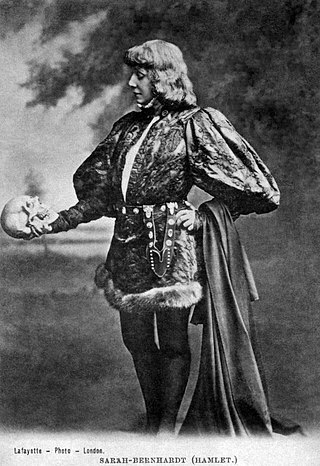
The paradox of fiction, or the paradox of emotional response to fiction, is a philosophical dilemma that questions how people can experience strong emotions to fictional things. The primary question asked is the following: How are people moved by things which do not exist? The paradox draws upon a set of three premises that seem to be true prima facie but upon closer inspection produce a contradiction. Although the emotional experience of fictional things in general has been discussed in philosophy since Plato, the paradox was first suggested by Colin Radford and Michael Weston in their 1975 paper "How Can We Be Moved by the Fate of Anna Karenina?". Since Radford and Weston's original paper, they and others have continued the discussion by giving the problem slightly differing formulations and solutions.

Peter Vaudreuil Lamarque is a British aesthethician and philosopher of art, working in the analytic tradition. Since 2000, he has been a professor of philosophy at the University of York. He is known primarily for his work in philosophy of literature and on the role of emotions in fiction.
Roman Frigg is a Swiss philosopher and professor at the Department of Philosophy, Logic and Scientific Method at the London School of Economics, where he also directs its Centre for Philosophy of Natural and Social Science. He is also visiting professor at the Munich Centre for Mathematical Philosophy at Ludwig Maximilian University. In 2016 he was awarded the Friedrich Wilhelm Bessel Research Award.
References
- ↑ Philosophy faculty listing Archived 2011-08-04 at the Wayback Machine , Univ. of Michigan, retrieved 2010-03-06.
- ↑ Walton, Kendall L. "Mimesis as Make-Believe: On the Foundations of the Representational Arts". Harvard University Press, 1990
- ↑ 'Transparent Pictures: On the Nature of Photographic Realism' in Walton, Kendall L., Marvelous Images: On Values and the Arts, Oxford University Press, 2008, pp. 79-116
- ↑ Interview at Only a Game
- ↑ Interview at Only a Game
- ↑ Curriculum vitae from Walton's web site.
- ↑ Interview at Only a Game
- ↑ 'Categories of Art' reprinted in Walton, Kendall L., Marvelous Images: On Values and the Arts, Oxford University Press, 2008
- ↑ Interview at Only a Game
- ↑ Curriculum vitae from Walton's web site.
- ↑ Walton, Kendall L. 'Pictures and Make-Believe', The Philosophical Review (July 1973), pp. 283-319.
- ↑ Walton, Kendall L. "Mimesis as Make-Believe: On the Foundations of the Representational Arts". Harvard University Press, 1990
- ↑ 'Pictures and Hobby Horses' in Walton, Kendall L., Marvelous Images: On Values and the Arts, Oxford University Press, 2008
- ↑ Mimesis, p. 11
- ↑ Mimesis, p. 38
- ↑ Mimesis, pp. 58-61
- ↑ Mimesis, pp. 293-384
- ↑ Mimesis, p. 34
- ↑ Mimesis, pp. 40-42
- ↑ Mimesis, p. 385
- ↑ Mimesis, pp. 390-392
- ↑ Walton, Kendall L. 'Fearing Fictions', Journal of Philosophy, vol. 75, no. 1, 1978, pp. 5-27.
- ↑ http://www.iep.utm.edu/fict-par/ 'Paradox of Fiction', Internet Encyclopedia of Philosophy, accessed 4 April 2011
- ↑ Mimesis, pp. 241-249
- ↑ Walton, Kendall L. 'Metaphor and Prop Oriented Make-Believe', European Journal of Philosophy, no. 1, 1993, pp. 39–57.
- ↑ Walton, Kendall L. 'Existence as Metaphor?' in A. Everett and T. Hofweber (eds.), Empty Names, Fiction and the Puzzles of Non-Existence, Stanford, CA, CSLI Publications, 2000
- ↑ Yablo, Stephen. 'Does Ontology Rest on a Mistake?', Proceedings of the Aristotelian Society, Supplementary vol. 72, no. 1, 1998, pp. 229–262.
- ↑ Yablo, Stephen. 'Go Figure: A Path through Fictionalism', Midwest Studies in Philosophy, vol. 25, 2002, pp. 72-102.
- ↑ Levinson, Jerrold. 'Making Believe', Dialogue: Canadian Philosophical Review, vol. 32, 1993.
- ↑ Säätelä, Simo. 'Fiction, Make-Believe and Quasi Emotions', British Journal of Aesthetics, vol. 34, no. 1, 1994.
- ↑ Maynard, Patrick. 'Real Imaginings, Walton Symposium in Philosophy and Phenomenological Research, vol. 51, no. 2, June 1991.
- ↑ "Game Design as Make-Believe 27 May 2010. Retrieved 23 February 2011.
- ↑ "Imaginary Games", 22 February 2011. Retrieved 22 February 2011.
- ↑ “How Marvelous!”: Toward a Theory of Aesthetic Value in Walton, Kendall L., Marvelous Images: On Values and the Arts, Oxford University Press, 2008, pp. 3-19
- ↑ 'Style and the Products and Processes of Art' in Walton, Kendall L., Marvelous Images: On Values and the Arts, Oxford University Press, 2008, pp. 221-248
- ↑ 'Transparent Pictures: On the Nature of Photographic Realism' in Walton, Kendall L., Marvelous Images: On Values and the Arts, Oxford University Press, 2008, pp. 79-116
- ↑ 'Transparent Pictures', p. 86
- ↑ 'Transparent Pictures', p. 85-87
- ↑ 'Transparent Pictures', p. 89